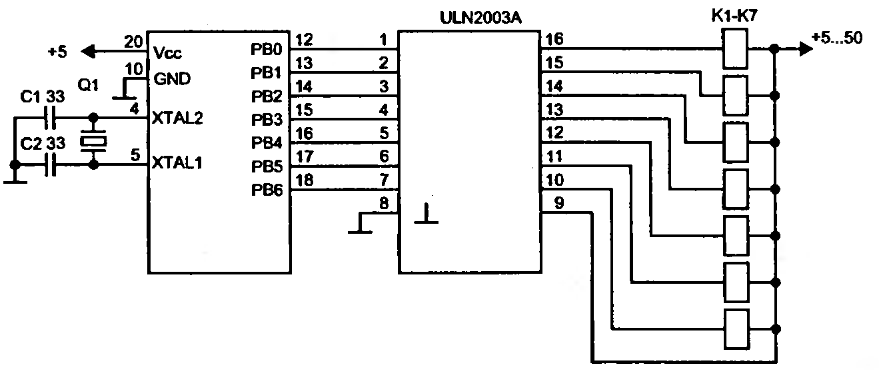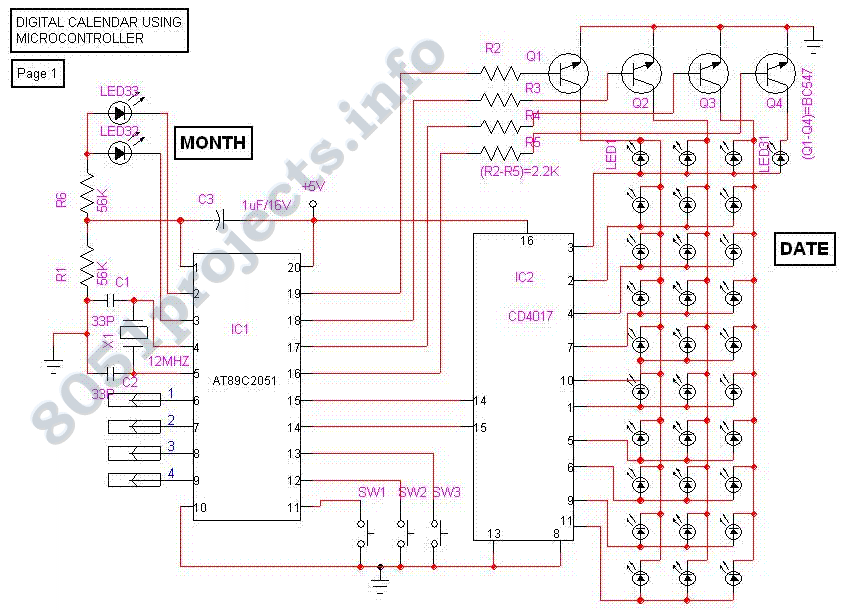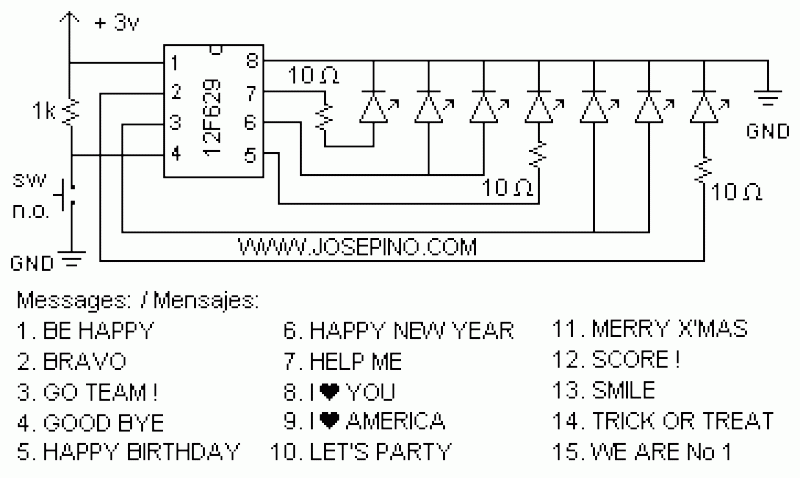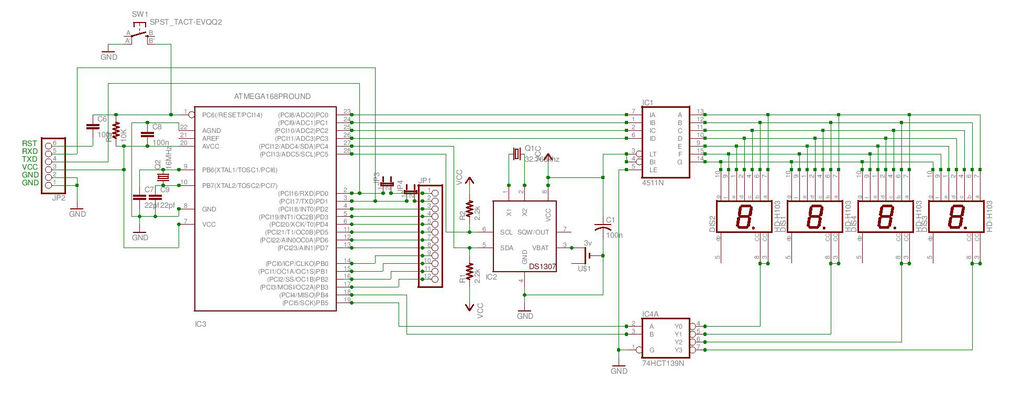
How to interface LEDs with 8051 Microcontroller
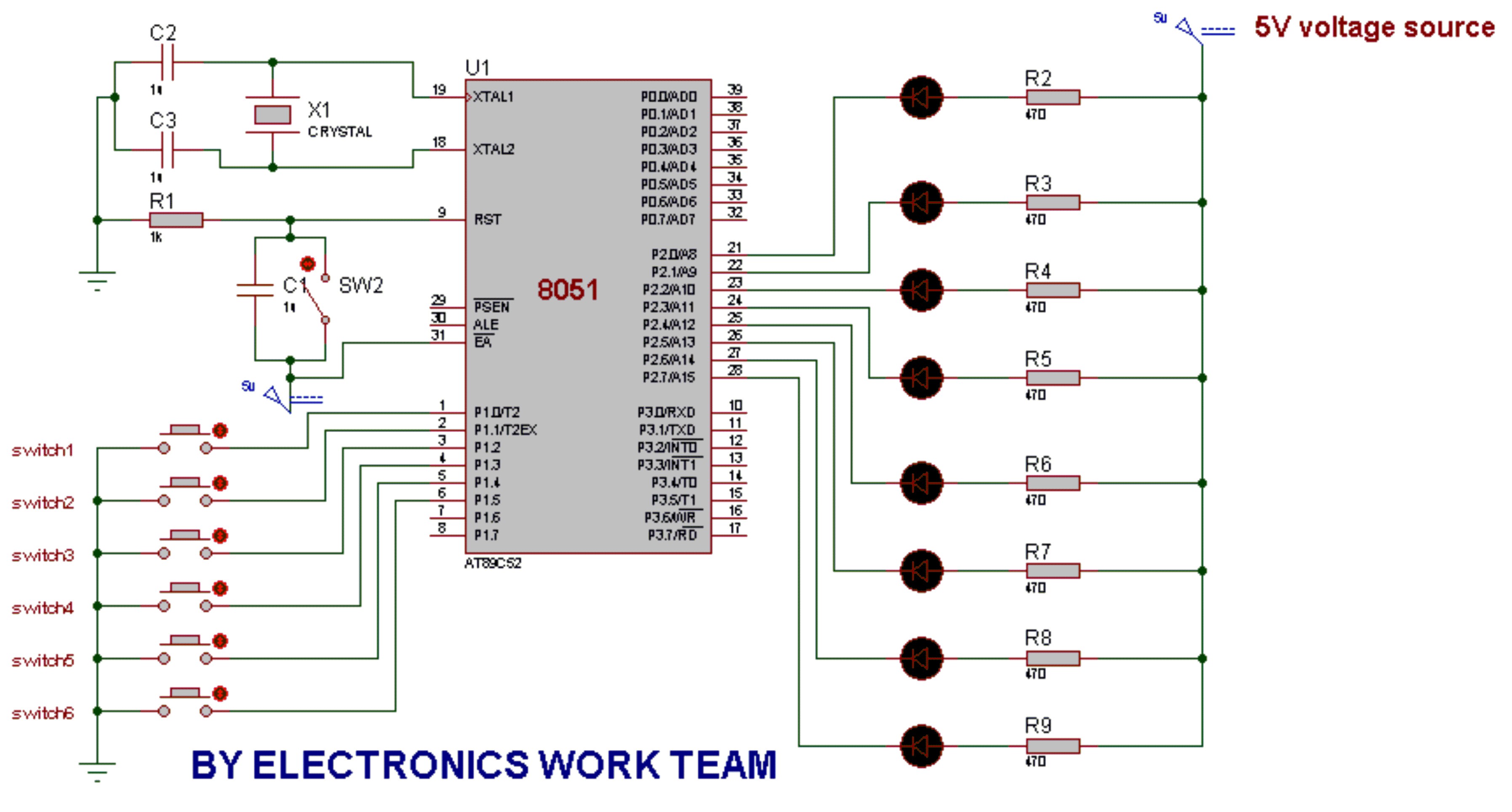
This post discusses the fundamental operation of the 8051 microcontroller using LEDs. The LEDs are connected to the P2 port, while six switches are connected to the P1 port of the 8051. By pressing various switches, the LEDs will illuminate in different patterns. This information may be particularly beneficial for beginners working with the 8051 microcontroller.
The 8051 microcontroller is a widely used embedded system component known for its versatility and ease of use in various applications. In this setup, the P2 port is utilized for output, where multiple LEDs can be connected. Each LED can be controlled individually or in groups, depending on the logic implemented in the microcontroller's firmware. The P1 port, designated for input, is connected to six switches that allow user interaction.
When a switch connected to the P1 port is pressed, it sends a signal to the microcontroller, which can then process this input. The microcontroller's program can be designed to respond to each switch in a unique way, resulting in different LED patterns. For example, pressing switch one might cause a specific LED to turn on, while pressing switch two could lead to a different LED illuminating or a combination of LEDs flashing in a sequence.
To implement this circuit, it is essential to configure the microcontroller's I/O ports correctly. The P2 port should be set as an output port, while the P1 port is configured as an input port. Pull-up resistors may be used on the switches to ensure that the input reads a high state when the switch is not pressed. When the switch is pressed, the input state changes to low, allowing the microcontroller to detect the switch activation.
In summary, this basic operation of the 8051 microcontroller with LEDs and switches serves as an excellent introduction for beginners. It illustrates fundamental concepts such as digital input and output, user interaction, and simple programming logic, providing a solid foundation for further exploration and experimentation with microcontroller applications.This post is related to basic operation of 8051 microcontroller with LEDs. LEDs are connected with P2 port & 6 switches are connected with P1 port of 8051. By pressing different switches, LEDs will glow in different manners. This post may be very helpful for 8051 microcontroller beginners. 🔗 External reference
The 8051 microcontroller is a widely used embedded system component known for its versatility and ease of use in various applications. In this setup, the P2 port is utilized for output, where multiple LEDs can be connected. Each LED can be controlled individually or in groups, depending on the logic implemented in the microcontroller's firmware. The P1 port, designated for input, is connected to six switches that allow user interaction.
When a switch connected to the P1 port is pressed, it sends a signal to the microcontroller, which can then process this input. The microcontroller's program can be designed to respond to each switch in a unique way, resulting in different LED patterns. For example, pressing switch one might cause a specific LED to turn on, while pressing switch two could lead to a different LED illuminating or a combination of LEDs flashing in a sequence.
To implement this circuit, it is essential to configure the microcontroller's I/O ports correctly. The P2 port should be set as an output port, while the P1 port is configured as an input port. Pull-up resistors may be used on the switches to ensure that the input reads a high state when the switch is not pressed. When the switch is pressed, the input state changes to low, allowing the microcontroller to detect the switch activation.
In summary, this basic operation of the 8051 microcontroller with LEDs and switches serves as an excellent introduction for beginners. It illustrates fundamental concepts such as digital input and output, user interaction, and simple programming logic, providing a solid foundation for further exploration and experimentation with microcontroller applications.This post is related to basic operation of 8051 microcontroller with LEDs. LEDs are connected with P2 port & 6 switches are connected with P1 port of 8051. By pressing different switches, LEDs will glow in different manners. This post may be very helpful for 8051 microcontroller beginners. 🔗 External reference

